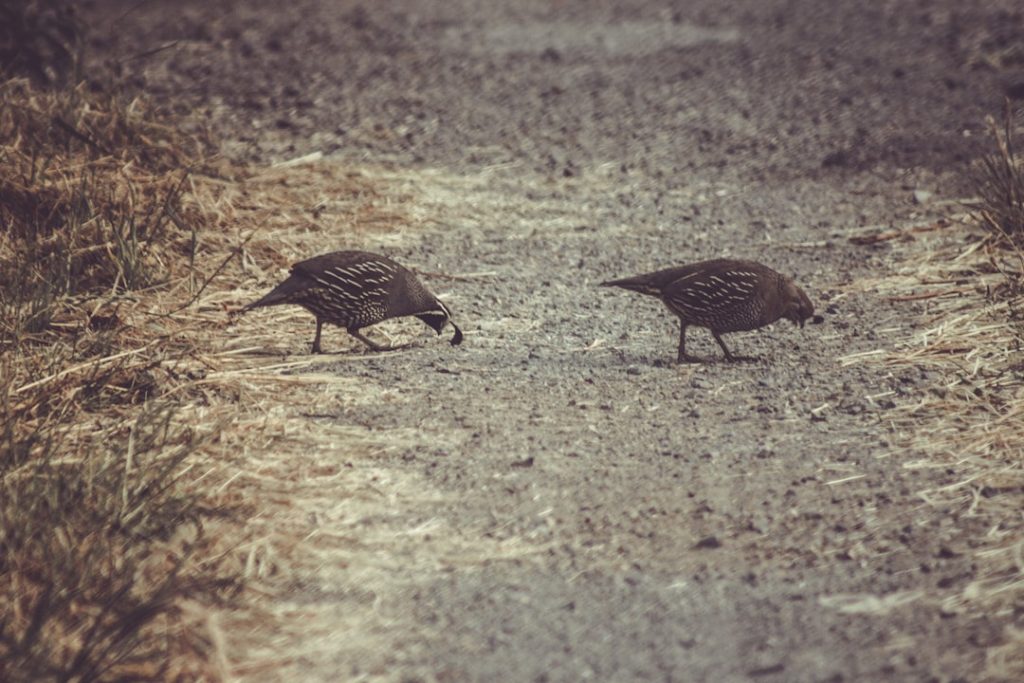Quail farming has been gaining popularity in the Philippines due to the increasing demand for quail eggs and meat. There are several quail breeds that are commonly raised in the country, each with its own unique characteristics and benefits. These breeds include the Native Philippine Quail (Coturnix coturnix), the Japanese Quail (Coturnix japonica), the Button Quail (Turnix spp.), the King Quail (Excalfactoria chinensis), and the Bobwhite Quail (Colinus virginianus). Each breed has its own distinct traits and is suitable for different purposes, making them a versatile option for farmers and hobbyists alike.
Table of Contents
Key Takeaways
- There are several quail breeds in the Philippines, each with unique characteristics and benefits.
- The Native Philippine Quail, also known as Coturnix coturnix, is a popular breed known for its adaptability and resilience.
- The Japanese Quail, or Coturnix japonica, is widely raised for its high egg production and fast growth rate.
- The Button Quail, belonging to the Turnix spp., is a small breed known for its colorful plumage and unique appearance.
- The King Quail, or Excalfactoria chinensis, is a small but hardy breed that is popular for its gentle nature and beautiful plumage.
- The Bobwhite Quail, also known as Colinus virginianus, is a popular game bird breed known for its delicious meat and distinctive call.
- Raising different quail breeds in the Philippines can provide a sustainable source of protein, eggs, and income for farmers, as well as contribute to biodiversity conservation.
The Native Philippine Quail (Coturnix coturnix)
The Native Philippine Quail, also known as the Filipino Native Quail, is a small bird that is native to the Philippines. It is known for its distinctive brown and white plumage, with a mottled appearance that helps it blend into its natural habitat. The Native Philippine Quail is a popular choice for quail farming in the Philippines due to its adaptability to the local climate and its ability to thrive in a variety of environments. This breed is primarily raised for its meat and eggs, which are considered a delicacy in Filipino cuisine. The quails are known for their tender and flavorful meat, making them a sought-after ingredient in many traditional dishes. Additionally, their eggs are prized for their rich flavor and high nutritional value, making them a popular choice for health-conscious consumers.
The Native Philippine Quail is also known for its high egg production, with hens laying an average of 12-14 eggs per clutch. This makes them a profitable option for farmers looking to produce quail eggs for commercial purposes. In addition to their economic benefits, the Native Philippine Quail is also valued for its cultural significance in the Philippines. Quail fighting, a popular pastime in the country, often features the Native Philippine Quail due to its aggressive nature and fighting prowess. Overall, the Native Philippine Quail is a versatile breed that offers both economic and cultural benefits to farmers in the Philippines.
The Japanese Quail (Coturnix japonica)
The Japanese Quail, also known as the Jumbo Coturnix, is another popular breed of quail that is commonly raised in the Philippines. This breed is known for its rapid growth and high egg production, making it a profitable option for commercial quail farming. The Japanese Quail is larger in size compared to the Native Philippine Quail, with a plump body and a speckled plumage that varies in color from brown to white. This breed is highly adaptable and can thrive in various environmental conditions, making it well-suited for farming operations in the Philippines.
One of the key advantages of raising Japanese Quail is their high egg production, with hens laying an average of 250-300 eggs per year. This makes them a valuable asset for farmers looking to produce quail eggs for sale in the local market or for commercial distribution. Additionally, Japanese Quail are known for their fast growth rate, reaching maturity in as little as 6-8 weeks. This makes them an efficient option for meat production, as they can be harvested at a relatively young age. The meat of the Japanese Quail is tender and flavorful, making it a popular choice for culinary purposes in the Philippines. Overall, the Japanese Quail is a versatile breed that offers both high egg production and rapid growth, making it a profitable option for quail farming in the Philippines.
The Button Quail, also known as the Bustard Quail or Ground Quail, is a small breed of quail that is native to Asia, including the Philippines. This breed is known for its diminutive size and ground-dwelling behavior, making it a unique option for quail farming in the country. The Button Quail is characterized by its small size, with a round body and short tail, and a mottled plumage that provides excellent camouflage in its natural habitat. This breed is primarily raised for its ornamental value, as it is often kept as a pet or aviary bird due to its attractive appearance and interesting behavior.
In addition to their ornamental value, Button Quail are also raised for their small eggs, which are considered a delicacy in some cultures. While they may not be as prolific egg layers as other quail breeds, their eggs are prized for their rich flavor and high nutritional value. Additionally, Button Quail are known for their gentle nature and social behavior, making them an ideal choice for hobbyists looking to keep quails as pets. Overall, the Button Quail offers a unique option for quail farming in the Philippines, providing both ornamental value and small egg production.
The King Quail (Excalfactoria chinensis)
The King Quail, also known as the Blue-breasted Quail or Chinese Painted Quail, is a small breed of quail that is native to Southeast Asia, including the Philippines. This breed is known for its striking appearance, with vibrant plumage that features shades of blue, brown, and white. The King Quail is a popular choice for aviculture due to its attractive appearance and small size, making it well-suited for keeping in aviaries or as pets. This breed is also raised for its small eggs, which are considered a delicacy in some cultures.
One of the key advantages of raising King Quail is their ease of care and low maintenance requirements. They are relatively hardy birds that can adapt to various environmental conditions, making them an ideal choice for hobbyists or small-scale farmers. Additionally, King Quail are known for their social behavior and gentle nature, making them easy to handle and interact with. This breed offers a unique option for quail farming in the Philippines, providing both ornamental value and small egg production.
The Bobwhite Quail (Colinus virginianus)

The Bobwhite Quail, also known as the Northern Bobwhite or Virginia Quail, is a popular breed of quail that is native to North America. This breed has been introduced to the Philippines and is now raised by some farmers and hobbyists due to its adaptability and desirable traits. The Bobwhite Quail is known for its distinctive call, which sounds like “bob-white,” and its attractive appearance, with mottled plumage that varies in color from brown to white. This breed is primarily raised for its meat and eggs, which are considered a delicacy in some cultures.
One of the key advantages of raising Bobwhite Quail is their rapid growth rate and high meat yield. They reach maturity in as little as 16 weeks and are known for their tender and flavorful meat, making them a popular choice for culinary purposes in the Philippines. Additionally, Bobwhite Quail are prolific egg layers, with hens laying an average of 12-16 eggs per clutch. This makes them a valuable asset for farmers looking to produce quail eggs for sale in the local market or for commercial distribution. Overall, the Bobwhite Quail offers a versatile option for quail farming in the Philippines, providing both high meat yield and egg production.
The Benefits of Raising Different Quail Breeds in the Philippines
Raising different quail breeds in the Philippines offers several benefits for farmers and hobbyists alike. Each breed has its own unique characteristics and advantages, making them suitable for various purposes such as meat production, egg laying, ornamental value, or pet keeping. By raising different quail breeds, farmers can diversify their operations and cater to different market demands, thereby increasing their potential for profitability.
One of the key benefits of raising different quail breeds is their adaptability to local environmental conditions. Many quail breeds are well-suited to the tropical climate of the Philippines and can thrive in various types of housing systems, making them an ideal option for small-scale farmers or backyard enthusiasts. Additionally, different quail breeds offer varying levels of egg production and meat yield, allowing farmers to choose breeds that best suit their production goals and market demands.
Furthermore, raising different quail breeds provides an opportunity for genetic diversity and conservation efforts. Some quail breeds may be at risk of declining populations due to habitat loss or overhunting, and by raising these breeds in captivity, farmers can contribute to their preservation and genetic diversity. This can be particularly important for native or endangered quail breeds that are unique to specific regions or countries.
In conclusion, raising different quail breeds in the Philippines offers a wide range of benefits including economic profitability, cultural significance, ornamental value, genetic diversity, and conservation efforts. By understanding the unique characteristics and advantages of each breed, farmers can make informed decisions about which breeds to raise based on their specific goals and market demands. Overall, quail farming in the Philippines presents an exciting opportunity for farmers and hobbyists to explore the diverse world of quail breeds and contribute to the growing demand for quail eggs and meat in the country’s agricultural industry.
If you’re interested in learning more about different breeds of quail in the Philippines, you might also want to check out this informative article on whether quails sit on their eggs. It provides valuable insights into the breeding behavior of quails and can be a great resource for anyone looking to raise these fascinating birds.
FAQs
What are the different breeds of quail in the Philippines?
There are several breeds of quail that are commonly found in the Philippines, including the Japanese quail (Coturnix japonica), the Bobwhite quail (Colinus virginianus), and the King quail (Excalfactoria chinensis).
What are the characteristics of Japanese quail?
Japanese quail, also known as Coturnix quail, are the most common breed of quail in the Philippines. They are known for their small size, rapid growth, and high egg production. They come in a variety of colors including white, brown, and speckled.
What are the characteristics of Bobwhite quail?
Bobwhite quail, also known as Virginia quail, are another popular breed in the Philippines. They are slightly larger than Japanese quail and are known for their distinctive call that sounds like “bob-white.” They are often raised for both meat and egg production.
What are the characteristics of King quail?
King quail, also known as Chinese painted quail, are the smallest breed of quail commonly found in the Philippines. They are known for their colorful plumage and are often kept as ornamental birds. They are also popular for their gentle nature and are sometimes kept as pets.
What are the uses of different breeds of quail in the Philippines?
In the Philippines, quail are primarily raised for their meat and eggs. Japanese quail are especially popular for their high egg production, while Bobwhite quail are often raised for their flavorful meat. King quail are sometimes kept as ornamental birds or pets.
Meet Walter, the feathered-friend fanatic of Florida! Nestled in the sunshine state, Walter struts through life with his feathered companions, clucking his way to happiness. With a coop that’s fancier than a five-star hotel, he’s the Don Juan of the chicken world. When he’s not teaching his hens to do the cha-cha, you’ll find him in a heated debate with his prized rooster, Sir Clucks-a-Lot. Walter’s poultry passion is no yolk; he’s the sunny-side-up guy you never knew you needed in your flock of friends!







